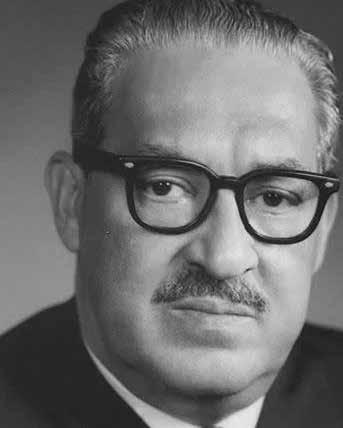
3 minute read
DIVERSITY ISSUES
KING/THURGOOD: The Intertwinement of Destiny

Advertisement
By Brandon C. McClain, Recorder DBA Board of Trustee Treasurer & Diversity Issues Section Montgomery County Recorders Office
It is utterly impossible to have a proper discussion about the Civil Rights Movement (“the movement”) and not mention Rev. Dr. Martin Luther King, Jr. However, it is equally challenging to discuss the movement and not consider how its overall mission of equality was only possible because of the many landmark victories of Thurgood Marshall. The legacy of both men are not just intertwined, but rather, somewhat dependent on the other. With each landmark victory by Marshall, a solid legal foundation was built for King to challenge segregation.
In total, Marshall argued 32 cases before the Supreme Court of the United States- winning 29. Each victory achieved by Marshall estab lished important precedent in the fight of equality for all. However, legal scholars widely consider the most impactful victory to be the historic ruling of the 1954 case of Brown v. Board of Education, which struck down the “separate but equal” doctrine established by the Supreme Court nearly 60 years earlier in Plessy v. Ferguson. The Brown case would serve as not only a catalyst for the expansion of the civil rights movement during the 1950s and 1960s, but also a substantive spark for the transformation of a young minister into a prominent civil rights leader. Now enters Dr. King. In 1954, Dr. King, who was only 25-years-old, was the pastor of the Dexter Avenue Baptist Church, where he had advocated for proclaimed ”Gandhi-like techniques of front-line marching and nonviolent resistance” to achieve equality 1 . In 1955, African-Americans in Montgomery, Alabama (and essentially everywhere else in America) were still required to sit in the back portion of buses and to yield their seats to white riders if the front half of the bus, which was reserved for whites, was full.
On December 1, 1955, a seamstress by the name of Rosa Parks was commuting home on a bus from her job at a local department store. She was seated in the front row of the “colored section,” but when the white seats were filled; the bus driver, J. Fred Blake, asked Parks and three others to vacate their seats. All complied- except Parks. She was then arrested and subsequently fined $10, plus $4 in court fees. After her arrest, Parks contacted civil rights leader and union organizer E.D. Nixon. Nixon posted her bail and a discussion about her being a potential
Dayton Bar Briefs February 2020 plaintiff in a legal challenge to the bus segregation ordinance ensued 2 . On December 4 th , the Women’s Political Council, which was a group of African-American women passionate about civil rights, began circulating flyers announcing a boycott of the Montgomery bus system on December 5. That following day, approximately 40,000 AfricanAmericans- which was nearly 90% of the city’s bus riders- boycotted the busing system. That afternoon, African-American leaders from the city met to create the Montgomery Improvement Association (MIA), electing King as its president 3 . On December 8 th , the MIA issued a formal list of demands: courteous treatment by bus operators; first-come, first-served seating for all, with blacks seating from the rear and whites from the front; and black bus operators on predominately black routes. The city refused their demands, prompting African-Americans to use taxi cabs rather than buses and participate in a MIA organized carpool system comprised of 300 cars organized. The year of 1956 would serve as a battleground in the war of equality 4 . Early 1956 would see the homes of King and Nixon bombed; injunctions obtained against the boycott and nearly 100 boycott leaders indicted for engaging in a conspiracy that interfered with lawful businesswith King ultimately being convicted and sentenced to pay $500 or serve 386 days in jail 5 . Nonetheless, the bus boycott continued.
continued on page 9
ENDNOTES: 1 Will Haygood, Martin Luther King, Thurgood Marshall and the Way to Justice. The Marshall Project. ( January 15, 2016) https://www.themarshallproject. org/2016/01/15/martin-luther-king-thurgood-marshall-and-the-way-to-justice. 2 History.com Editors, Montgomery Bus Boycott. The History Channel. ( June 26, 2019) https://www.history.com/topics/black-history/montgomery-bus-boycott. 3 Id. 4 Id. 5 Id.










